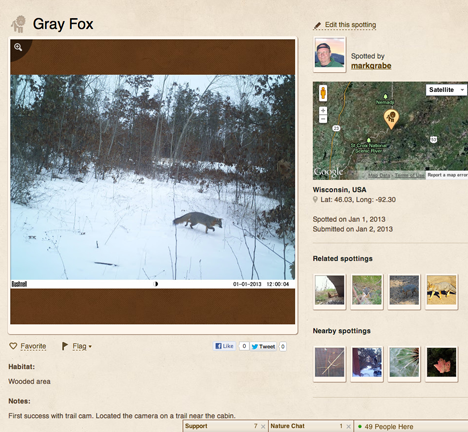From our earliest professional content addressing the integration of technology, we have used examples from the field. In this case, we use the word “field” to mean woods, water, and wildlife.
We like these examples because they:
- challenge the notion that technology limits interaction with the “real world” (escaping the classroom once in a while allows the student to explore the real world),
- offer opportunities for “authentic” (meaning practices of the discipline) activities that scale to the experience level of students, and
- take advantage of my original background in biology and science education.
We often use the holidays or summers to explore some new technology more intensively. This holiday we have been using what are commonly called trail cams. I received a Bushnell camera as birthday present in November and then purchased a second (and less expensive) bird cam (designed to take photos as birds come to a bird feeder).
Trail cams are motion triggered meaning they take photos or video when something moves nearby (even a branch close to the camera in our experience). Additional features could include things like night photography capabilities or flash photography. As we approach retirement we have purchased a cabin (more like a home) in the woods of northern Wisconsin and have the opportunity to view deer, bear, wolves, etc. We spend time in a great location for nature photography. I have long enjoyed exploring with a traditional camera, but the trail cam adds a different approach.
You can certainly generate your own ideas for using these tools in learning projects, but there are also sites and services available to make the process a lot easier. A New York startup has created Project Noah as an attempt to offer experiences for the amateur to the professional. A Wall Street Journal article describing this company is where I found the phrase “the smartphone is the butterfly net for the 21st century”.
Project Noah offers a site providing access to content, projects, and ideas for teachers. An app for use directly from your phone is also available. The quality of some of the images available from this site is amazing and obviously involved the use of some high quality camera equipment. However, the cell phone often offers a unique advantaged – most geotag the pictures they take allowing precise positioning on a collective map. It is interesting to build your own collection and search out what else has been submitted by others who have taken photos nearby.
If you enjoy photography or are looking for authentic projects for students, I encourage you to take a look by following some of the links provided here.
55 total views , 1 views today

